Curry leaves are a popular herb used in various cuisines for their unique flavor and medicinal properties. Growing curry leaves in pots allows for easy access and convenience, but providing them with the right nutrients is important to ensure healthy growth. This document will explore the best fertilizer options for curry leaves in pots, focusing on organic, natural, and homemade alternatives. We will also discuss the importance of the NPK ratio and guide on when and how to apply fertilizer for optimal results.
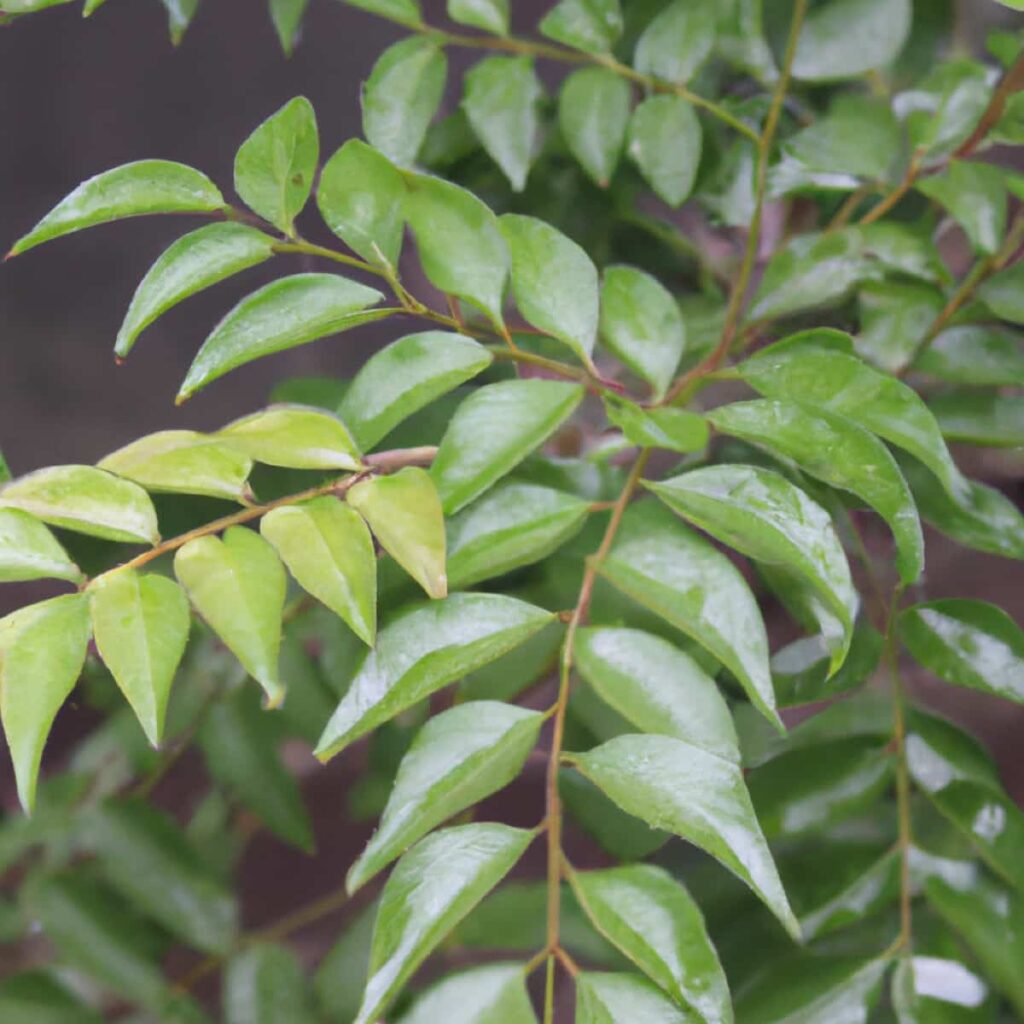
Best Fertilizer for Curry Leaves in Pots
Importance of Fertilizing Curry Leaves in Pots
Potted plants have limited access to nutrients compared to those in the ground. Curry leaves receive essential elements such as nitrogen, phosphorus, and potassium by providing adequate fertilization. These nutrients promote vigorous foliage growth, enhance leaf flavor and aroma, and increase resistance to pests and diseases. Regular fertilization also ensures continuous leaf production, allowing for a steady supply of fresh curry leaves for culinary purposes. Therefore, it is important to fertilize curry leaves in pots to optimize their growth and maximize their benefits.
Organic Fertilizers for Curry Leaves in Pots: Benefits and Recommendations
One of the key advantages is that organic fertilizers release nutrients slowly, providing a steady supply of nourishment to the curry leaf plants over an extended period. This promotes healthy growth and development, resulting in robust and flavorful leaves. Additionally, organic fertilizers enhance the soil structure, improving its ability to hold moisture and nutrients, which is crucial for potted plants.
Some recommended organic fertilizers include compost, well-rotted manure, seaweed extract, bone meal, and Asafoetida for curry leaf plants. These options are readily available and provide essential nutrients like nitrogen, phosphorus, and potassium. Regular application, proper watering, and adequate sunlight will help maintain healthy and thriving curry leaf plants.
Natural Fertilizers for Curry Leaves in Pots: Exploring Environmentally Friendly Options
There are several environmentally friendly options available. Compost, made from organic waste, is rich in nutrients and can be prepared easily at home. Vermicompost, produced by worms breaking down organic matter, is another beneficial option. Other alternatives include seaweed fertilizer for curry leaf plants, which provides essential minerals, and bone meal, which is a good source of phosphorus. By using these natural fertilizers, you can maintain a sustainable and eco-friendly approach to growing curry leaves in pots.
In case you missed it: 10 Best Companion Plants for Carrots: What Not to Plant With Carrots
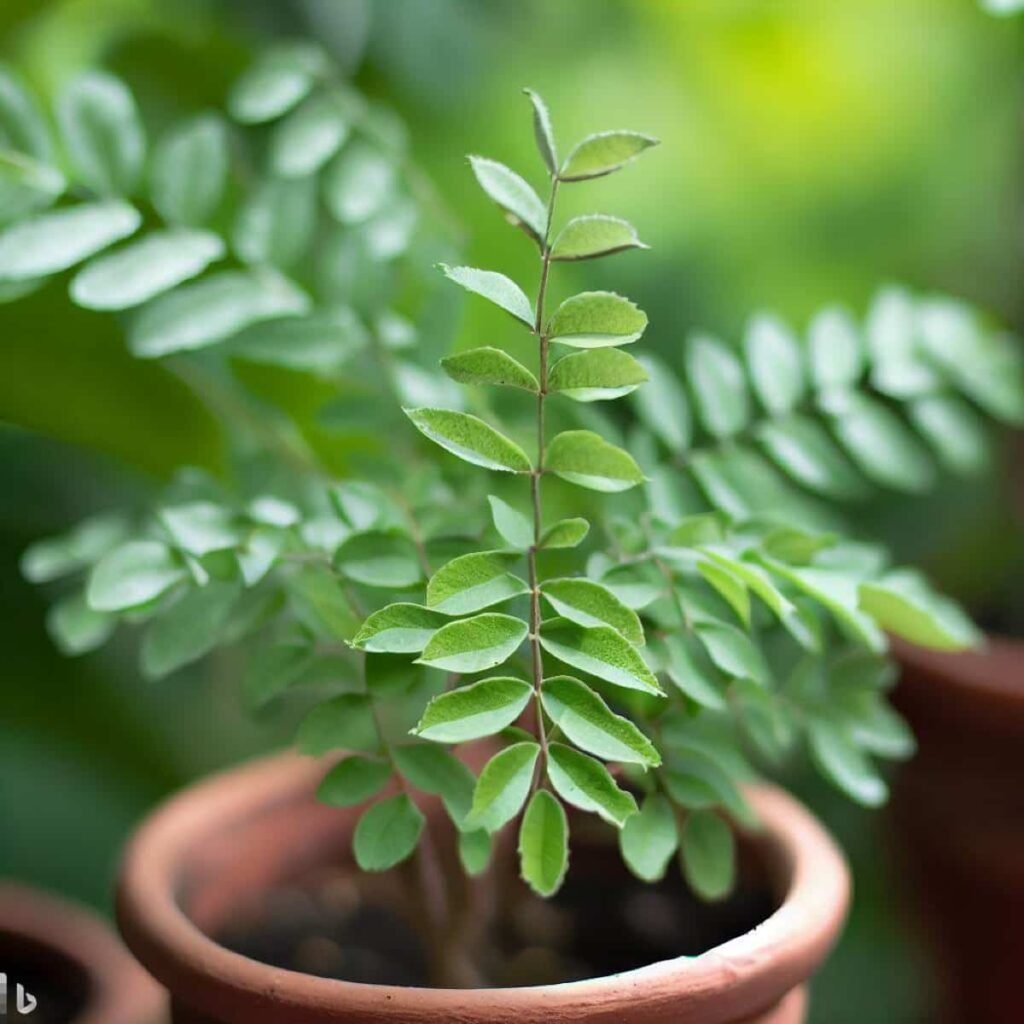
Homemade Fertilizers for Curry Leaves in Pots: DIY Solutions for Nutrient-Rich Soil
Banana Peel Fertilizer for Curry Leaf Plant: They have potassium abundantly, an essential nutrient for plant growth. To make a banana peel fertilizer, chop up a few banana peels and bury them directly into the soil around your curry plant. As the peels decompose, they release potassium into the soil, promoting healthy foliage and robust growth.
Eggshell Fertilizer: Collect and rinse eggshells thoroughly to remove any residue.MCrush the eggshells into small pieces and mix them into the soil. Eggshells are a rich calcium source, promoting strong cell walls and helping to prevent diseases.
Diluted Curd/ Buttermilk Fertilizer for Curry Leaf Plant: The best liquid fertilizer for curry leaf plants is the buttermilk or diluted curd method. To achieve better results, we need to wait until the soil is dry before applying fertilizer. For better results, mix two teaspoons of sour curd with 4 liters of water and apply it to the base of the curry leaves plant weekly.
NPK Ratio: Finding the Right Balance for Optimal Curry Leaves Growth in Pots
NPK refers to the balance of essential nutrients: nitrogen (N), phosphorus (P), and potassium (K). To find the right balance, consider the specific needs of curry leaves. Nitrogen promotes leafy growth, phosphorus aids root development, and potassium enhances overall plant health. For curry leaves, aim for an NPK ratio of approximately 4:2:1. This ratio ensures healthy foliage and a robust root system, resulting in vibrant and prolific growth. Maintaining the right NPK balance is key to fostering optimal curry leaves growth in pots.
In case you missed it: 15 Best Varieties of Dragon Fruit: DifferentTypes of Dragon Fruit (Pitaya) to Grow

The Role of Nitrogen in Fertilizing Curry Leaves in Pots: Dos and Don’ts
Nitrogen is crucial in fertilizing curry leaves in pots, as it is an essential nutrient for their growth and development. When applied correctly, nitrogen-based fertilizers can significantly enhance the productivity and health of curry leaf plants.
Do’s
- Apply the fertilizer during the growing season to support vigorous foliage growth.
- Follow the recommended application rate mentioned on the fertilizer packaging.
- Water the curry leaves after fertilization to help the plant absorb the nutrients effectively.
Don’ts
- Do not apply nitrogen fertilizer during the dormant period; it can stress the plant and hinder its growth.
- Refrain from applying fertilizer too close to the base of the plant, as it may cause root burn or damage.
- Do not mix nitrogen fertilizer directly with the potting soil, as it may result in nutrient imbalances.
In case you missed it: How to Start Seaweed Farming in India: Current Trend, Cost, Profits, Subsidy, Plant, and Companies
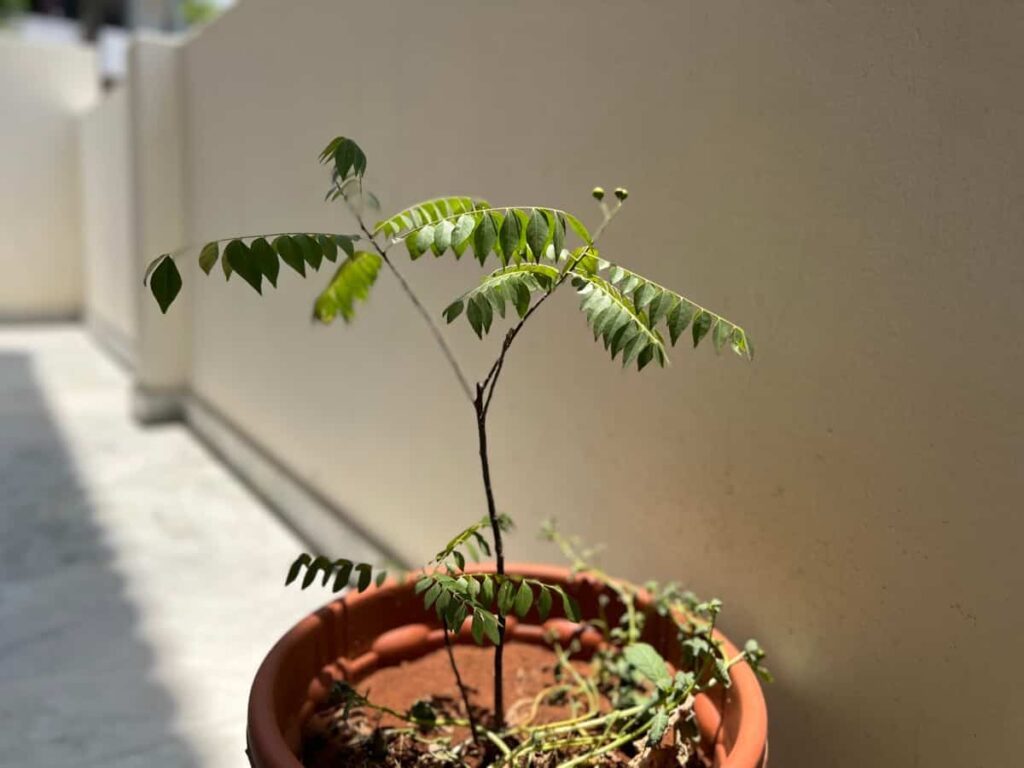
Phosphorus and Potassium: Essential Nutrients for Healthy Curry Leaves Plants in Pots
These nutrients are crucial in various physiological processes, ensuring optimal growth and abundant foliage. Phosphorus is vital for energy transfer, root development, and fruit production. It promotes strong root systems, enhances nutrient uptake, and aids photosynthesis.
Conversely, potassium is necessary for overall plant health, disease resistance, and water regulation. It helps synthesize proteins and carbohydrates, improves the plant’s ability to withstand stress, and enhances the flavor and aroma of the leaves. Regularly applying this fertilizer will help maintain the nutrient balance and ensure the healthy growth of curry leaves plants in pots.
When to Apply Fertilizer to Curry Leaves in Pots: Timing is Key for Maximum Effectiveness
The best time to apply fertilizer to curry leaves in pots is during the growing season, typically from spring to early fall. This is when the plants actively grow and require additional nutrients to support their development. Regularly monitor the curry plants for nutrient deficiency signs, like yellowing leaves or stunted growth. If deficiencies are observed, consider applying liquid fertilizer to boost nutrients quickly.
In case you missed it: How to Grow Curry Leaf Plants Faster: Best Tips to Increase Yield
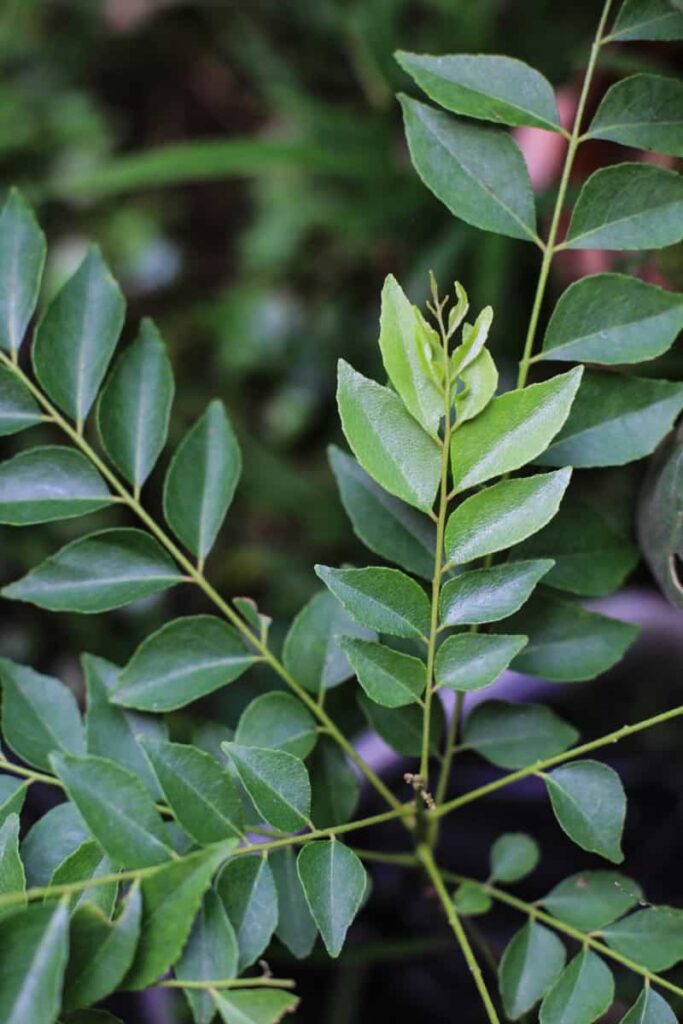
How to Apply Fertilizer to Curry Leaves in Pots: Techniques for Proper Nutrient Distribution
First, choose a balanced fertilizer specifically formulated for plants like curry leaves. This will provide the necessary nutrients without causing any harm. Next, measure the appropriate amount of fertilizer according to the package instructions. It’s important not to over-fertilize, as this can damage the plants.
Once you have the fertilizer ready, evenly distribute it around the base of the curry leaf plant in the pot. Avoid applying the fertilizer directly on the leaves, as it may cause burning. After applying the fertilizer, water the plant thoroughly to help the nutrients penetrate the soil and reach the roots. Repeat this process every 4-6 weeks during the growing season for optimal growth and health of your curry leaf plant.
Curry Leaf Plants: Does Epsom Salt Work?
It can be beneficial for curry leaf plants. It contains magnesium and sulfur, essential nutrients for plant growth. Adding Epsom salt to the soil can promote healthy foliage and enhance the overall health of the plant. However, it is crucial to use it in moderation, as excessive amounts may cause harm. Consulting with a gardening expert can provide further guidance on the appropriate use of Epsom salt for curry leaf plants.
In case you missed it: How to Grow Curry Leaf/Kadipatta Plant at Home: Check How this Guide Helps Beginners
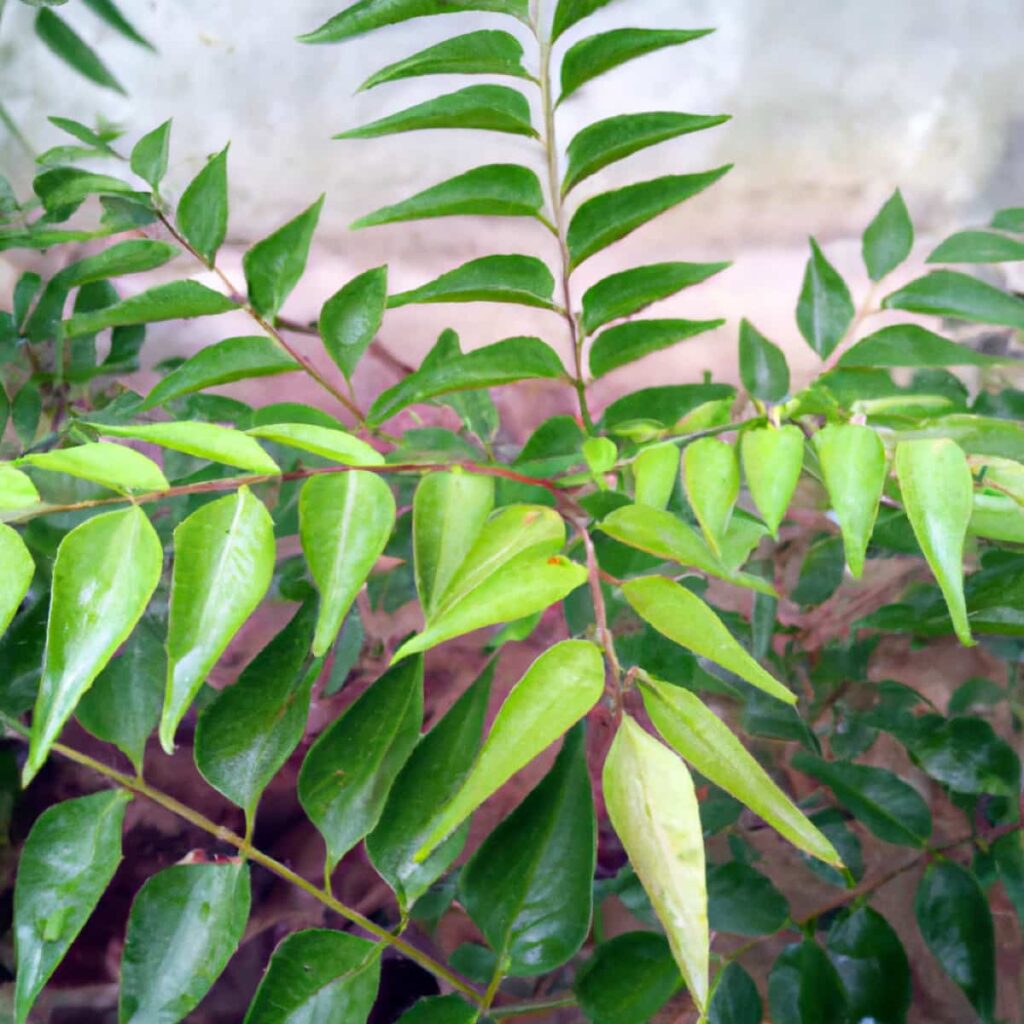
Conclusion
In conclusion, to ensure the best growth and productivity of curry leaves in pots, it is recommended to use fertilizers with a balanced NPK ratio. You can enjoy healthy and flavorful curry leaves from your potted plants by providing the right nutrients at the right time.
- How to Raise Pigs in Your Own Backyard: A Comprehensive Guide
- Budget Friendly Sheep Shed Ideas: Cheap and Low-Cost Tips
- How Much Do Cattle Farmers Make: Revenue Streams in Cattle Farming
- Management Pests and Diseases in Your Cotton Field
- Sheep Farming Business Plan for Beginners
- Aquaponic Farming at Home: A Step-By-Step Guide
- Profitable Village Farming Business Ideas in 2024
- High-Yield Aquaculture: Fast-Growing Fish for Farming
- Effective Fish Pond Construction Techniques for Beginners
- Irrigation and Water Management in Pineapple Farming
- Blossom to Harvest: Mastering Flowering and Pollination in Papaya Farming
- Pig Fattening Essentials: From Selection to Sale for Beginners
- Raising Wagyu Cattle: A Complete Guide for Premium Beef Production
- Soil Types and Their Water Holding Capacity
- Optimizing Irrigation Schedules for Coconut Groves for Enhanced Yield
- Espresso Your Garden: Coffee Grounds for Healthier Acid-Loving Plants
- The Best Soil Mix for Snake Plants: How to Mix Your Own Snake Plant Soil
- Green Thumb Success: Expert Tips for Cultivating Greenhouse Beans All Year Round
- Bloom All Year Round: The Ultimate Guide to Indoor Hyacinth Care
- Eco-Friendly Gardening: How to Make Liquid Fertilizer from Kitchen Waste
- Ultimate Guide to Grow Anise in Pots: Explore Seed Propagation to Harvesting
- Guide to Raising Chester White Pigs: Discover Breed Facts to Growth Management
- Mastering the Elegance: The Ultimate Guide to Weeping Cherry Tree Care, Planting, and Maintenance
- Ultimate Guide to Planting Garlic in Grow Bags: Growing Strategies for Beginners
- How to Fix Spider Plant Leaf-Related Problems: Natural and Organic Remedies
- 10 Reasons Why Your Tulsi Plant is Shedding Leaves: Home Remedies and Solutions
- Optimizing Growth and Yield: The Advantages of Palm Bunch Ash Fertilizer
- Utilizing Neem Oil Extract as a Natural Pesticide for Hydrangea
- From Soil to Harvest: Various Ways in Which Farmers Can Use AI Tools
- Steps to Encourage and Induce Citrus Flowers: A Comprehensive Guide
- How to Fix Snake Plant Leaf-Related Issues: Natural and Organic Remedies
- Transform Your Garden into a Fragrant Oasis with Raat Ki Rani (Night Blooming Jasmine)
- Discover the Ideal Chicken Breeds for Philippine Farms
- How to Create a Poultry Egg Farm Business Plan for Profits
- Grow Lemon Cucumbers Like a Pro: Insider Techniques for Bountiful Yields
- Ultimate Guide to Caring for Your Pink Princess Philodendron: Tips for Thriving Variegation
